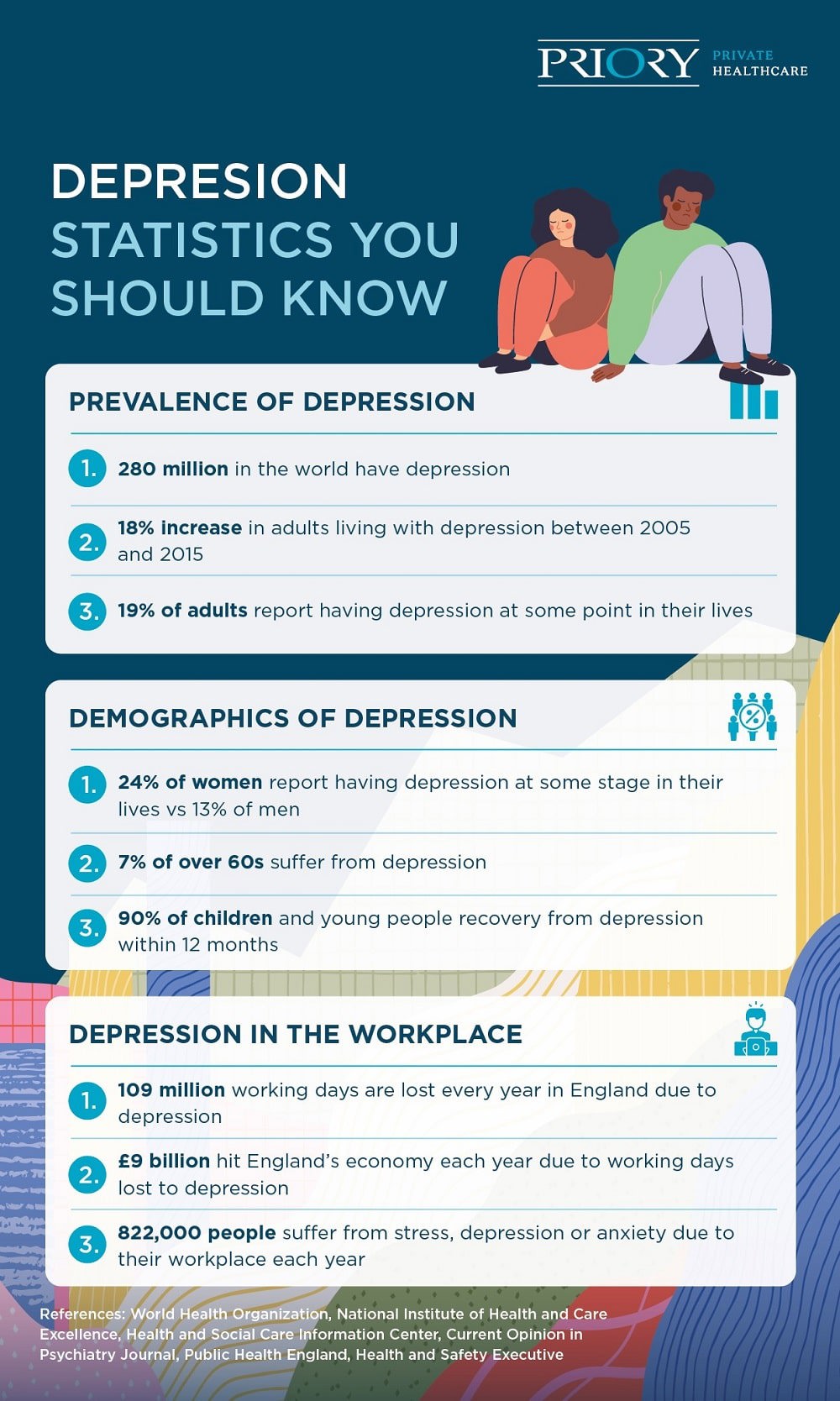Depression statistics
To raise awareness of those who suffer from depression across the UK and the world, we've compiled some of the most useful published facts and figures.
Depression is a mental health disorder that's characterised by feelings of sadness, anxiety, hopelessness and many other psychological and physical symptoms. Depression can affect people of all ages, genders and backgrounds.
Part of understanding the realities of depression is to get to terms with some of the research and statistics on the topic, separate from general mental health statistics. To help you develop awareness around depression, we’ve listed some depression facts and figures from leading organisations in mental health and public health.
